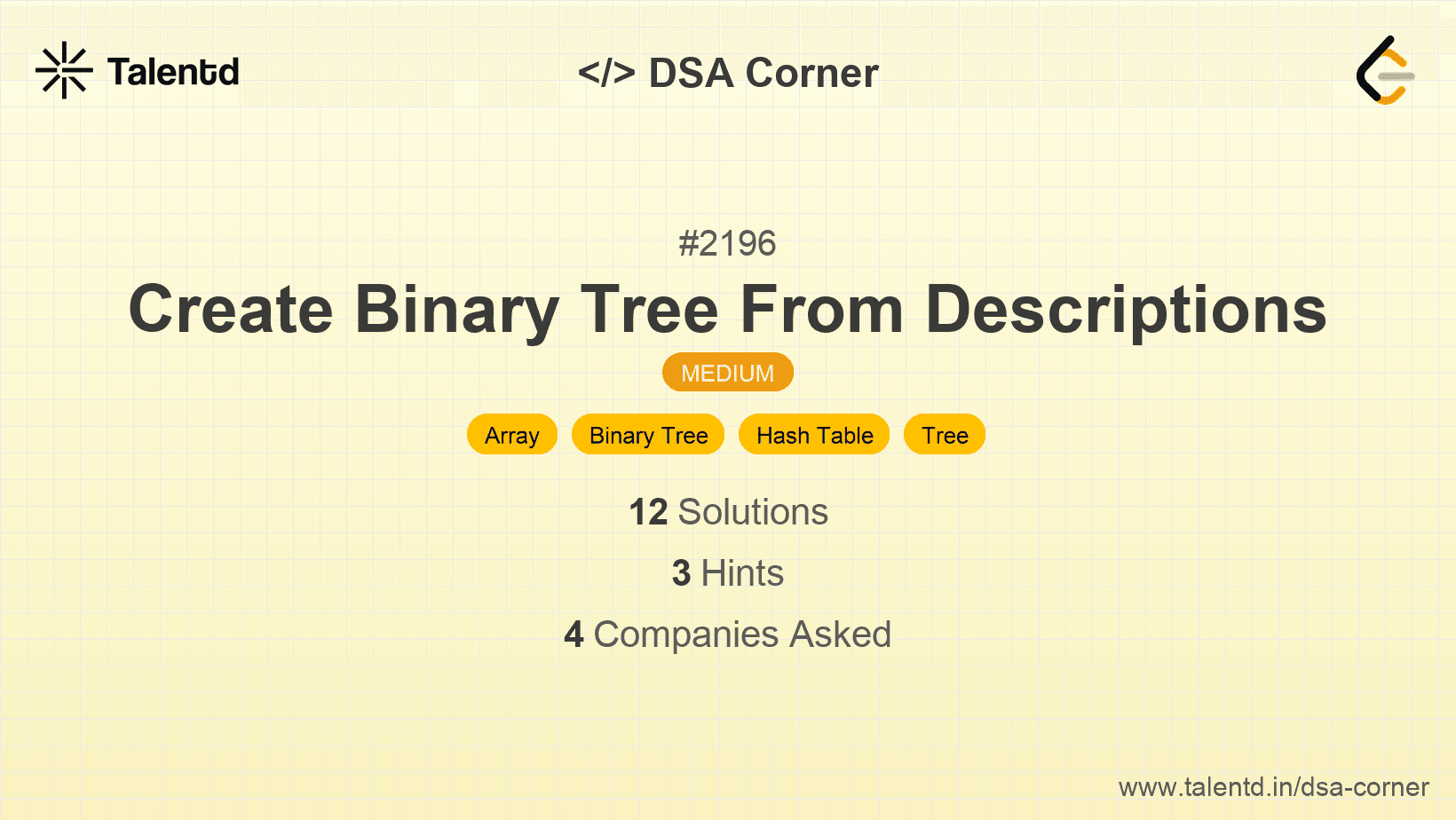
Sponsored
Sponsored
This approach uses a hash map to create nodes and establish their parent-child relationships. The root node is determined by finding nodes that haven't been a child in any relationship.
Time Complexity: O(N), where N is the number of descriptions.
Space Complexity: O(V), where V is the number of unique nodes.
1import java.util.*;
2
3class TreeNode {
4 int val;
5 TreeNode left;
6 TreeNode right;
7 TreeNode(int val) { this.val = val; }
8}
9
10class Solution {
11 public TreeNode createBinaryTree(int[][] descriptions) {
12 Map<Integer, TreeNode> nodeMap = new HashMap<>();
13 Set<Integer> children = new HashSet<>();
14
15 for (int[] desc : descriptions) {
16 int parent = desc[0], child = desc[1], isLeft = desc[2];
17 nodeMap.putIfAbsent(parent, new TreeNode(parent));
18 nodeMap.putIfAbsent(child, new TreeNode(child));
19
20 if (isLeft == 1) {
21 nodeMap.get(parent).left = nodeMap.get(child);
22 } else {
23 nodeMap.get(parent).right = nodeMap.get(child);
24 }
25
26 children.add(child);
27 }
28
29 for (int key : nodeMap.keySet()) {
30 if (!children.contains(key)) {
31 return nodeMap.get(key);
32 }
33 }
34
35 return null;
36 }
37}
38The Java solution implements a similar strategy using a HashMap for storing TreeNode objects and a HashSet to track nodes that have been children. The solution iterates over descriptions to create and link nodes, identifying the root as a node not in the child set.
This approach uses a two-pass algorithm: the first pass creates all nodes independently, and the second pass links them based on the descriptive relationships. This avoids simultaneous creation and linking, providing a clearer separation of concerns between node creation and linkage.
Time Complexity: O(N), where N is the number of descriptions.
Space Complexity: O(V), where V is the number of unique nodes.
1using System.Collections.Generic;
public class TreeNode {
public int val;
public TreeNode left;
public TreeNode right;
public TreeNode(int val = 0, TreeNode left = null, TreeNode right = null) {
this.val = val;
this.left = left;
this.right = right;
}
}
public class Solution {
public TreeNode CreateBinaryTree(int[][] descriptions) {
Dictionary<int, TreeNode> nodeMap = new Dictionary<int, TreeNode>();
HashSet<int> children = new HashSet<int>();
// First pass: Create all nodes
foreach (var desc in descriptions) {
int parent = desc[0], child = desc[1];
if (!nodeMap.ContainsKey(parent))
nodeMap[parent] = new TreeNode(parent);
if (!nodeMap.ContainsKey(child))
nodeMap[child] = new TreeNode(child);
children.Add(child);
}
// Second pass: Link nodes
foreach (var desc in descriptions) {
int parent = desc[0], child = desc[1], isLeft = desc[2];
if (isLeft == 1) {
nodeMap[parent].left = nodeMap[child];
} else {
nodeMap[parent].right = nodeMap[child];
}
}
foreach (var key in nodeMap.Keys) {
if (!children.Contains(key)) {
return nodeMap[key];
}
}
return null;
}
}
The C# implementation employs a similar two-pass strategy. It maps each TreeNode to its value and marks children, using a second loop to build left and right mappings per description.